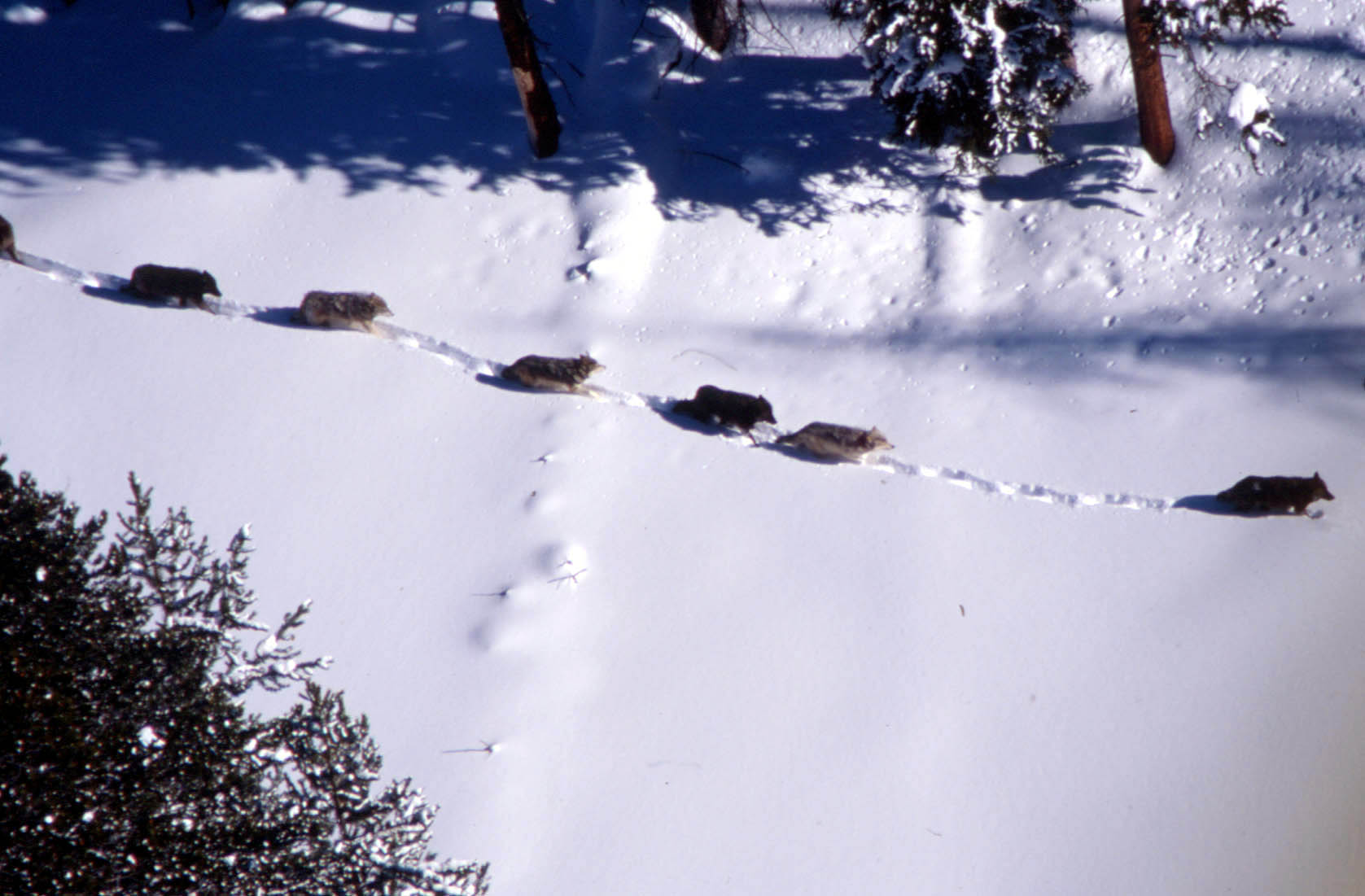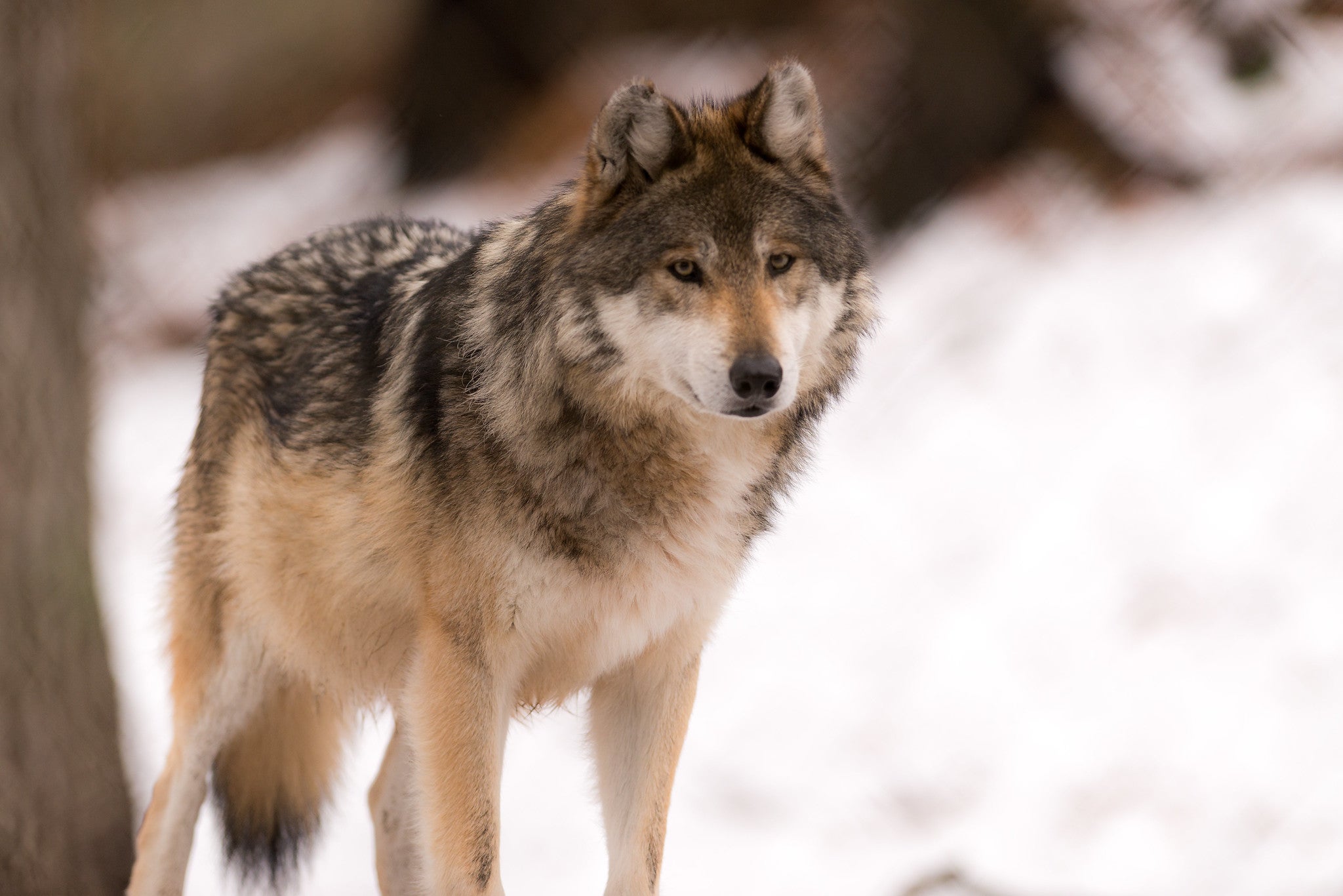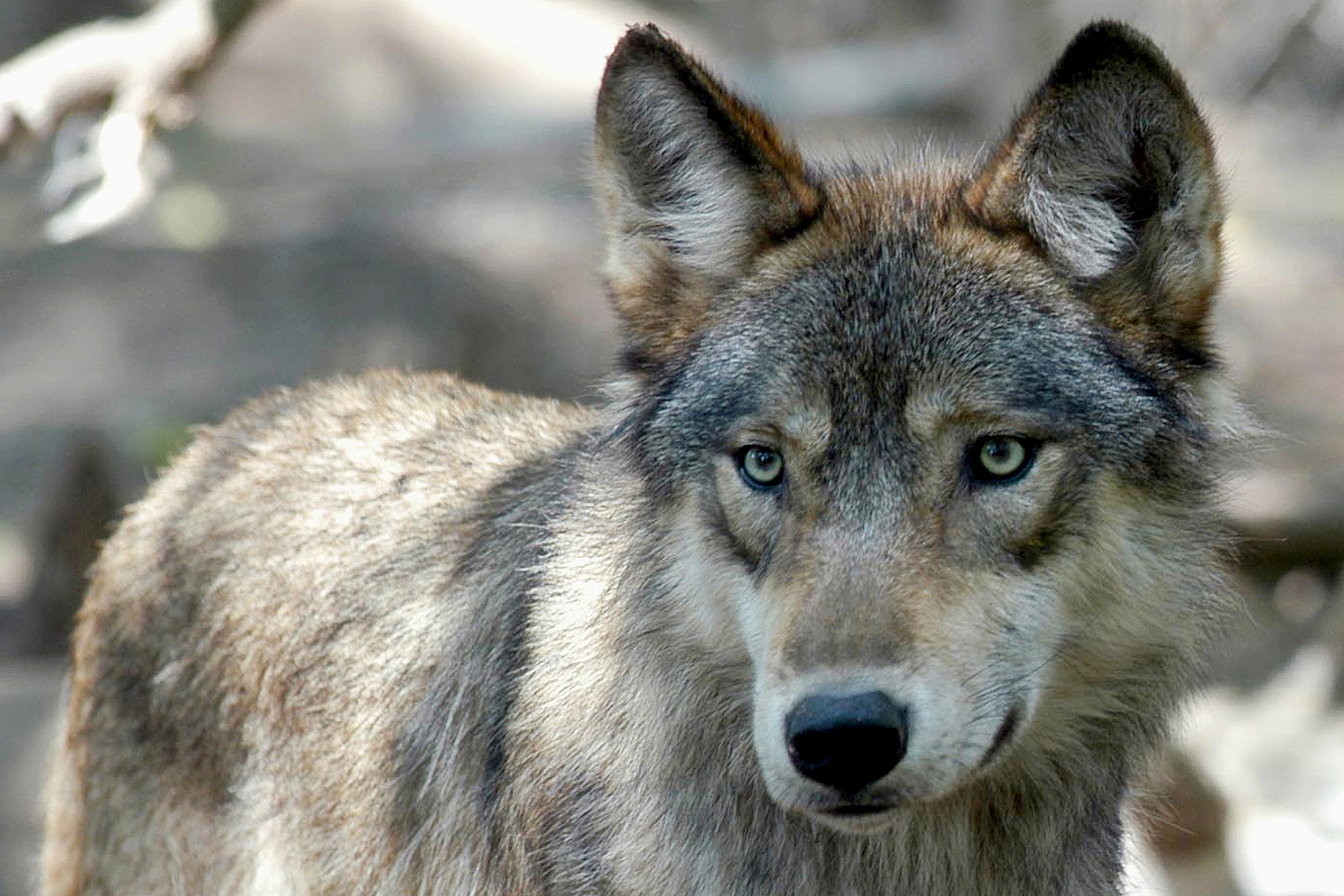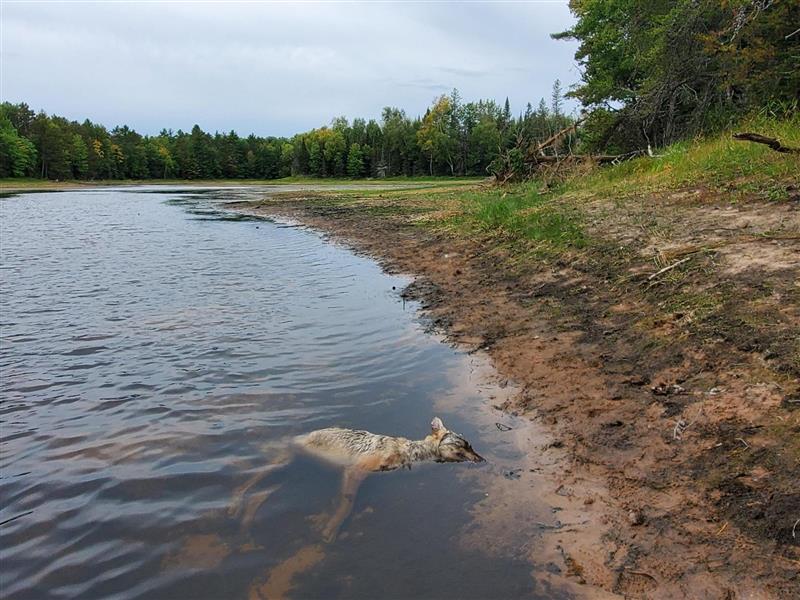Wisconsin wildlife regulators are shifting away from a statewide wolf population goal in favor of managing animals locally within the state’s six wolf hunting zones under a draft plan released Thursday.
The plan is being met with support by conservation and environmental groups while some lawmakers and hunting groups criticized the timing of its release just two days after voters reelected Gov. Tony Evers.
It’s the first new wolf management plan in more than two decades since the first was approved in 1999. That plan was last revised in 2007. The Wisconsin Department of Natural Resources began crafting a new plan in 2013, but the draft was abandoned two years later following a federal judge’s ruling to restore protections for the animal in late 2014. In February, a federal judge once again listed the species as endangered across most of the country.
Stay informed on the latest news
Sign up for WPR’s email newsletter.
“The proposed draft Wolf Management Plan reflects the detailed and significant work done by DNR staff to ensure the health and stability of Wisconsin’s wolf population. Input from diverse and varied stakeholders was critical to the development of this proposal,” said DNR Secretary Preston Cole in a statement.
The last plan set a population goal of 350 wolves at a time when Wisconsin had roughly 250 wolves. Since then, DNR data from September shows the animal’s population has grown four times that number to nearly 1,000 wolves. Meanwhile, neighboring Minnesota has released a draft plan to maintain a population between 2,200 and 3,000 wolves.
Sen. Rob Stafsholt, R-New Richmond, who chairs the Senate’s sporting heritage committee, accused the DNR of waiting to release the plan until after the election.
“Sportsmen and sportswomen are not going to appreciate once they figure out what this management plan actually does. It actually doesn’t manage the species…. I think they probably slid that out there and didn’t want to make highlight of it, especially right before an election where the governor was trying to get reelected,” said Stafsholt.
In response, the agency said in a statement that it understands the perception related to the timing, but disputed claims the DNR was sitting on the plan.
“The 2022 public attitudes survey was completed in September, after which we incorporated those results into the draft plan,” said the agency. “We continued to work on the draft plan all throughout October and right up until release date, addressing feedback given from internal reviews and briefings.”
After the Trump administration removed protections early last year, conservative members of the Natural Resources Board and wolf opponents pointed to the 1999 plan as justification for higher wolf harvests to reduce the population and eliminate conflicts with livestock and dogs.
Mike Brust, legislative liaison with the Wisconsin Bowhunters Association, said there are places where wolves should thrive in Wisconsin.
“But we’re allowing them to expand…into areas where they’re just going to cause problems, cause conflicts, and that doesn’t help anybody,” said Brust. “We’d like to see management by zone, but where zones contain primarily unsuitable habitat for wolves, we would hope that wolves be managed pretty aggressively in those areas.”

‘We know better’
Tribes, wolf advocates and conservation groups have criticized the existing plan as vastly outdated and not grounded in science. Fred Clark, executive director of Wisconsin’s Green Fire, said the draft plan strikes a balance between maintaining the wolf population and addressing wolf conflicts. He said establishing a statewide goal wouldn’t reflect the variability of wolf habitat.
“Each hunting season, the department will need to come up with a framework and an allocation of permits based on this plan,” said Clark. “We think that’s just a better way to manage, and we do that with other species as well.”
The state’s 1999 plan drew heightened scrutiny following the February 2021 wolf hunt, during which hunters killed 218 wolves in less than three days. State-licensed hunters went beyond a 200-wolf quota, consuming their share and a portion set aside for Ojibwe tribes. Tribes have declined to harvest the wolf because they view the animal as a brother.
Amy Mueller, wildlife team member with Sierra Club Wisconsin, said the group is cautiously optimistic about the plan. Mueller said it’s a big improvement that it doesn’t include a population goal of 350 wolves.
“I think it’s a sign of how the times have changed since the 1999 plan was written. We know better,” said Mueller. “We know not to sort of project what we think is realistic for population growth. So, this is a very big step in the right direction in terms of just maintaining a healthy and viable wolf population.”
The DNR said the new plan adopts a more “holistic” approach to wolf management that transitions from the wolf’s recovery to conservation. Scientists have disagreed over whether the gray wolf has recovered. Critics of the DNR say the agency is overestimating the animal’s resilience and underestimating wolf mortality.
Greg Kazmierski, chair of the Natural Resources Board, wants to see more details from the agency on the metrics it would use to determine how wolves should be managed in the state’s six wolf hunting zones. He said depredation of livestock, deer, and dogs are factors for weighing those decisions.
“I firmly believe we can and should have wolves on the landscape, but that means they have to be managed to a level where the other populations are also sustainable,” said Kazmierski.
The new plan aims to balance tradeoffs between key objectives for the state’s wolf population that include:
- Ensuring a healthy and sustainable wolf population
- Addressing and reducing wolf conflicts
- Providing multiple benefits linked to the wolf population
- Increasing public understanding of wolves
- Conducting scientific research to inform wolf management
- Providing leadership in collaborative, science-based wolf management
The plan recommends collecting input from the state’s wolf advisory committee to aid with reviewing data and trends in each of the state’s six wolf management zones and setting harvest quotas to maintain, grow or decrease wolves.
The plan also seeks to reduce the time to register wolf kills from 24 hours to eight hours after harvest, as well as issue zone-specific tags. The DNR would also add ways to address local concerns that include harvesting wolves near reservations and focusing hunts in areas with problem wolves. The agency also plans to revise wolf hunting zones.
Last year, the DNR originally planned to hold a hunt in November, prompting a lawsuit from Kansas-based Hunter Nation. A Jefferson County judge ordered the agency to hold a hunt in February in line with a 2012 law that mandates a season when the wolf isn’t under federal protection.
Wisconsin tribes, wolf advocates and conservationists called the 2021 hunt a “slaughter of wolves” and slammed the DNR for failing to properly manage the season.
Farmers, hunters and NRB members have argued there are far too many wolves in the state, citing attacks on pets and livestock. The DNR verified 108 of 182 reported wolf conflicts last year. The number of livestock killed by wolves represents a fraction of the 3.5 million cattle in Wisconsin.
The state planned to hold a second hunt last November, but a Dane County judge placed that season on hold. Just months later, a federal judge restored protections for gray wolves across most of the country in February.
The DNR is accepting feedback and input on the draft plan for the next 60 days until Jan. 10, 2023.
Wisconsin Public Radio, © Copyright 2025, Board of Regents of the University of Wisconsin System and Wisconsin Educational Communications Board.



